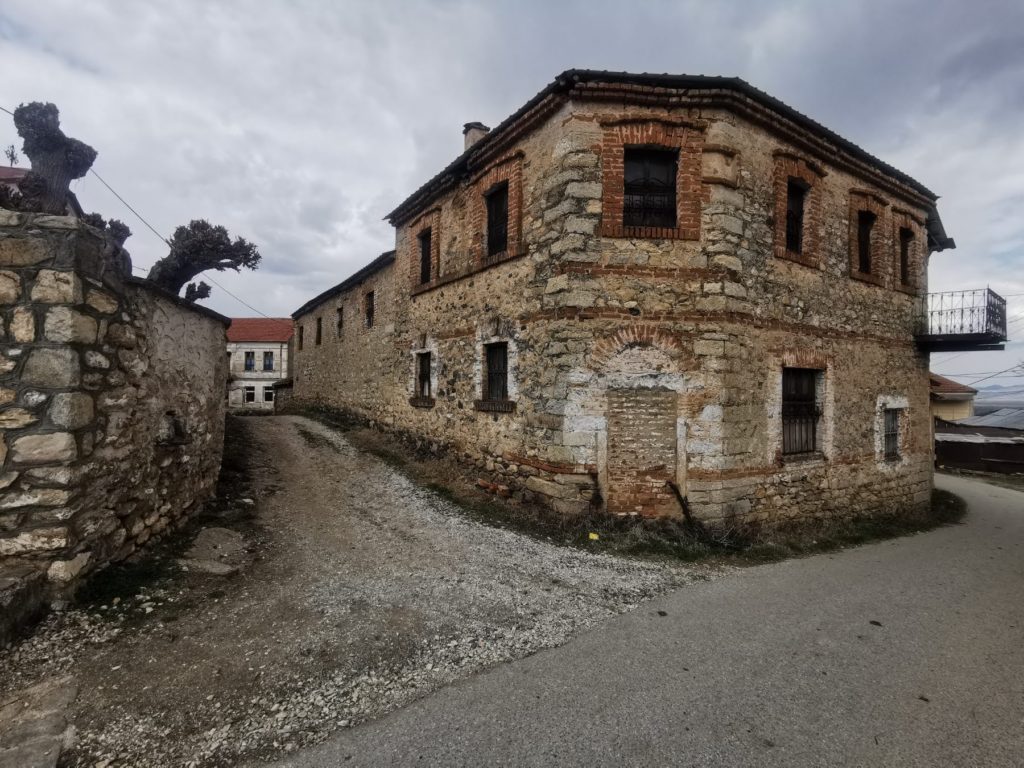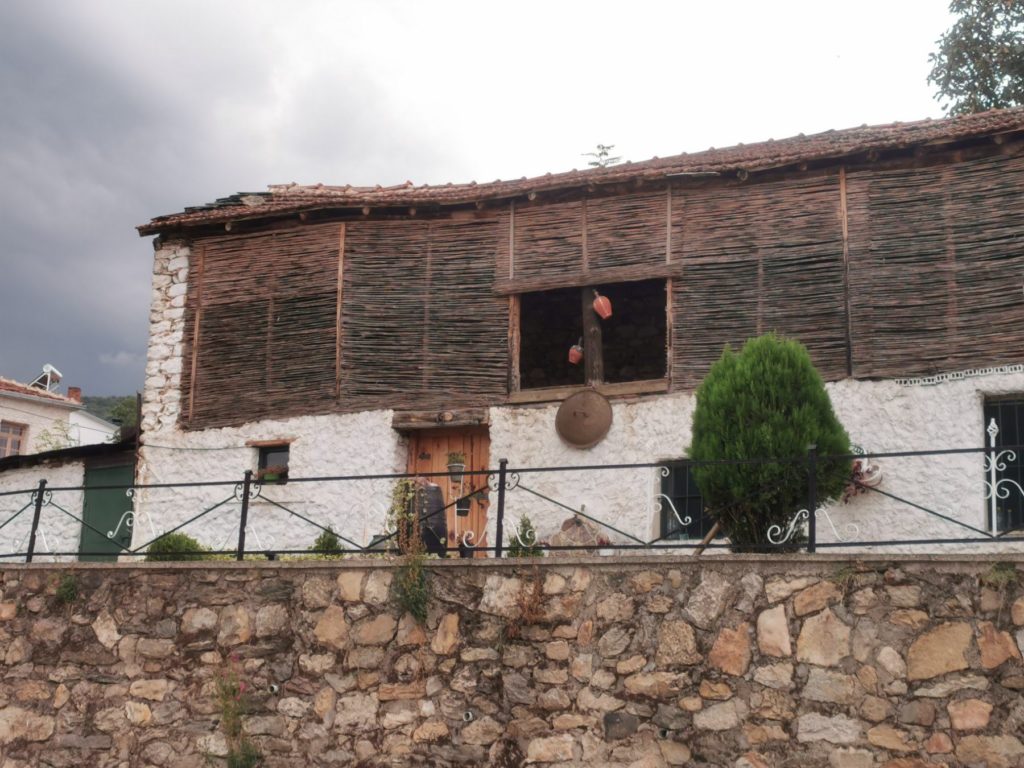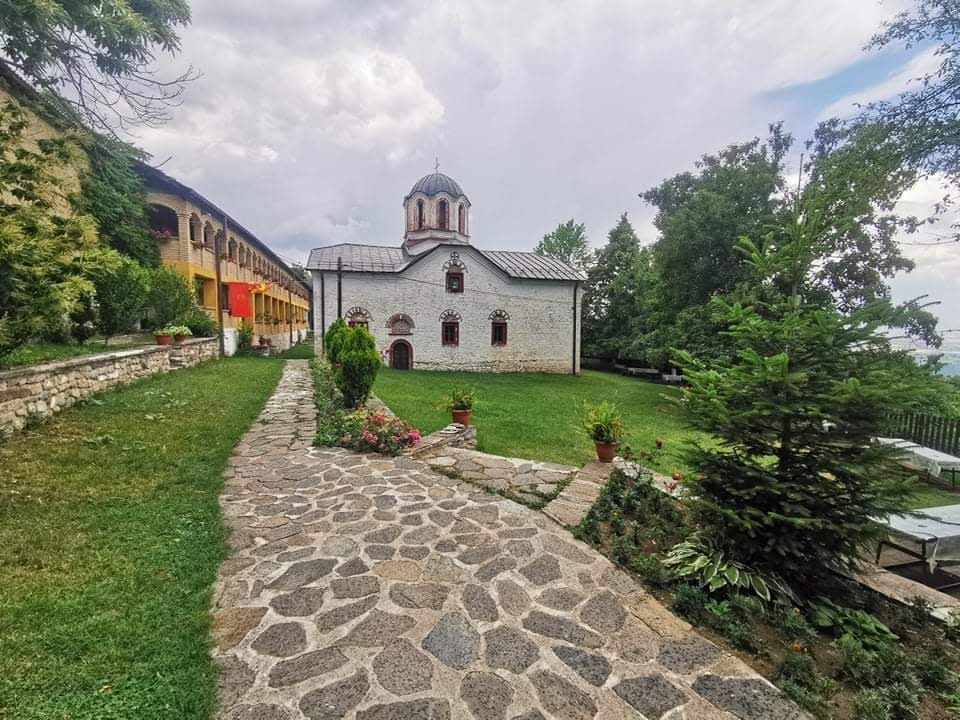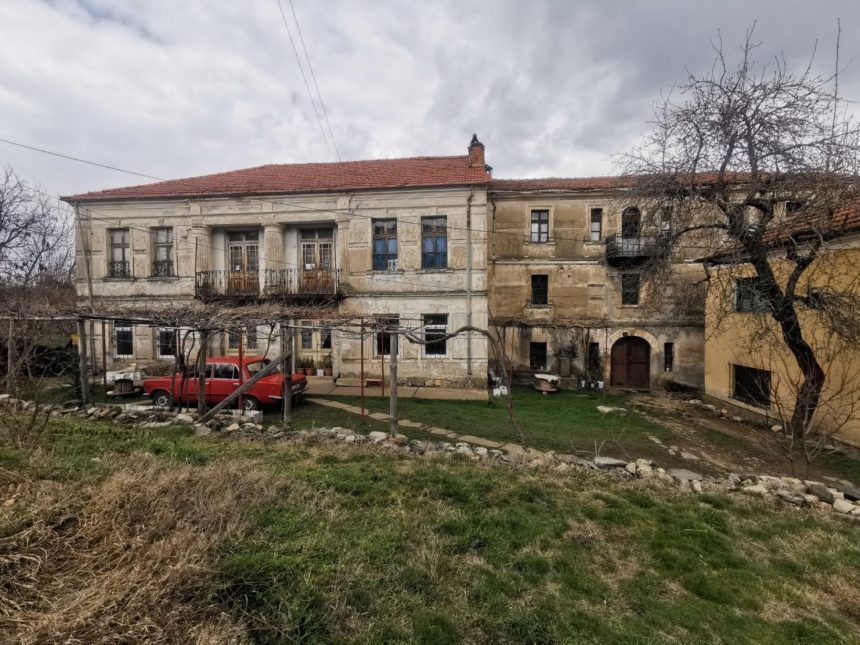Let me tell you a story about a seemingly ordinary village in the Macedonian hills near the city of Bitola. The name of that village is Bukovo which comes from the word “Buka” (meaning: Beech) named for the Beech forest cradling the village high on Baba Mountain. Bukovo is located in close proximity to the ancient city of Heraclea Lyncestis, founded by Philip II in 4th century BC, a city containing some of the most beautiful ancient mosaics in the world. The proximity of this ancient site to the village is not only spatial and physical. There is a legend that Bukovo was founded by residentswho fled Heraclea after a terrible earthquake in the 5th century. The same legend tells that the mountainside hides moreancient mosaics just waiting to be discovered.
From murders to poppies to peppers
Even from its early history, the village of Bukovo is much more than meets the eye. Not only are there underground mosaics, but Bukovo’s narrow crooked cobbled streets hide a rich history, culture, tradition, legends, mystery and even the murder of a Russian Consul. Walking through the village, the first thing one notice is the unusual mix of architectural styles that give the village its unique look. A mix of folk architecture – stone houses on one or two floors with verandas and large double-winged gates mixed with urban eclecticism, neo-baroque, neo-renaissance and neo-classicism as represented on Shirok Sokak in Bitola, the town of Monastir I told you about a while ago if you remember the story. Speaking of which, remember those hard-working world consuls who lived in Monastir during the Ottoman Empire? Well Bukovo, and especially the Bukovo Monastery of the Transfiguration of Christ, was their favorite picnic spot and escape from the busy Monastir life. Returning from one of these excursions, the Russian Consul Rostkovsky was killed in his luxurious carriage by a Turkish soldier.

Each of these unique houses in Bukovo has a tale. One hides a dark story of past pain and suffering when it was used as a prison in World War II. Another house served as a mysterious film location for the award winning series Senke nad Balkanom (Black Sun), capturing Bukovo’s history as growers of the cleanest poppies. The house ever beautiful continues to be the backdrop to many treasured moments between newlyweds. Come autumn, other houses are decorated with hanging red peppers on their terraces preserving the secret of the “Macedonian Relish” and the world-famous spice “Bukovska Piper” or “Bukovo Chilli”. It is a spice characteristic of traditional Macedonian cuisine and patented in Bukovo, whose method of preparation in ovens and with wooden kitchen utensils has remained unchanged for centuries. The spice is a mixture of crushed flakes, seeds and dried pepper crust with a deep red orange hue. The peppers have a special elongated appearance and grow in abundance in the surroundings of Bukovo. When the western world is decked with pumpkins and decorations for Halloween, Bukovo decorates its homes with red peppers to be dried on porches and terraces. When Christmas decorations adorn homes in other places, in Bukovo the peppers are taken to special home ovens to dry, and later are crushed and the magic called Bukovska Piper is born. This orange red magic can even be found on Italian pizzas. The significance of Bukovska Piper means it is on the Brussels pending list for a registered original Macedonian product.

Looted, pillaged, stolen…
Perhaps the biggest of all of Bukovo’s secrets is hidden by the Bukovo Monastery, the excursion center of the entire Monastir diplomatic corps, located 2 km from the village by a winding road cut into the Buka forest. Because of this monastery, Bukovo was called the second Hilandar in the Balkans by one of the greatest and most important Macedonian folklorists, Marko Cepenkov. In the past, it represented one of the largest and truly significant spiritual, monastic and literary centers in Bitola and the surrounding area. The literary center was founded by Tsar Stefan Dušan the Mighty in the 14th century and the epithet second Hilandar was due to the huge library of books and manuscripts that it contained. This library was maintained and replenished by the monks, who continuously spread Slavic literacy, spirituality and culture, and it is considered that this monastic literary center was the first of its kind in Bitola and its surroundings, and also the most significant after Hilandar on Mount Athos. Unfortunately, with the collapse of the Ottoman Empire and the Balkan Wars, the numerous manuscripts were pillaged and taken out of Bukovo and Macedonia by the various neighboring warring armies. Yet to be retrieved it only adds to the mysteries surrounding this small place.

All this mixed together sounds like a History Channel midnight tale full of conspiracy theories doesn’t it? Or at least a good plot for a Dan Brown book. But considering that in modern times there is a joke that only the Sun is older than Bukovo, and as a Macedonian proverb says: “Where there is smoke there is fire”, one can never really know with these kind of stories. With this thought I conclude my story about this seemingly but far from ordinary village, which I hope you liked. Until the next story…
XXXXXXXXXXXXXXXXX